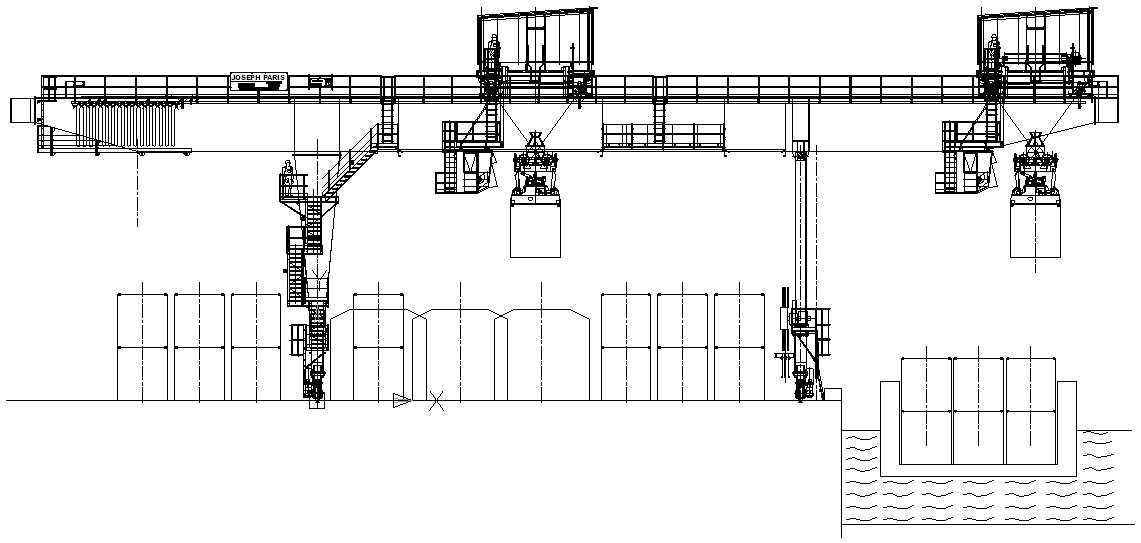Dust management in the steel industry is a critical issue that requires a holistic approach. As engineers, we understand that imposing a one-size-fits-all abatement technology is not always the most effective solution. Instead, it is crucial to consider the unique characteristics of each plant and its local environment to achieve optimal results.
Understanding Dust Emissions
Particulate matter (PM) in the atmosphere, commonly known as dust, consists
of minuscule solid or liquid particles suspended in the air. These particles
can either be of human origin (anthropogenic) or naturally occurring. Dust
emissions pose significant challenges due to their detrimental effects on human
health and the environment, influencing climate conditions and precipitation
patterns.
In the steel industry, dust emissions can originate from various processes,
including the transport, storage, handling, heating, and transformation of raw
materials. Key emissions include particulate matter (PM), sulfur dioxide (SO2),
and nitrogen oxides (NOx). Additionally, minor emissions such as dioxins and
heavy metals are typically attached to dust particles.
A Holistic Approach to Dust Management
Effective dust management in the steel industry involves employing a variety
of techniques, with the choice of method largely dependent on plant
configuration and local circumstances. Here are key aspects of a holistic dust
management strategy:
Stack Emissions Control
Stack emissions, released from identifiable point sources, are managed using
several control measures:
- Beneficiation: Removing potential contaminants before further processing.
- Process Optimization: Enhancing efficiency to achieve more with less.
- Abatement Technologies: Implementing bag filters, electrostatic precipitators (ESPs), wet scrubbing systems, and other technologies.
- Monitoring and Maintenance: Regular source monitoring, incident investigation, plant inspections, and targeted maintenance regimes.
Diffuse and Fugitive Emissions Management
Diffuse emissions, originating from areas such as stockpiles and roads, and
fugitive emissions, escaping from non-point sources like roof vents, require
distinct management practices:
- Material Handling and Storage: Minimizing material volumes, optimizing stockpile design, and using enclosures for bulk material storage.
- Transport Activities: Watering roads, applying surface sealants, and using closed transport belts.
- Proactive Measures: Implementing weather alert systems, ambient monitoring, plant inspections, and risk management systems.
Optimal Regulatory Practices
Regulatory authorities often believe that imposing specific abatement
technologies is the key to cutting emissions. However, this approach can be
limiting. Instead, authorities should set appropriate emission limits within
environmental permits, allowing steel companies the flexibility to select the
most suitable technologies and practices. With their comprehensive
understanding of operations, steel companies are best positioned to choose
effective and sustainable solutions.
The Importance of Source Apportionment
Understanding which sources contribute most to emissions is crucial for
effective dust management. Emission sources within a steel plant can be diverse,
making it challenging to accurately determine their individual contributions.
Therefore, refining methods for source apportionment is a priority. This
refinement will ensure that mitigation efforts are targeted correctly,
providing the greatest benefits to society.
Conclusion
The steel industry's journey towards effective dust management is a
testament to its commitment to the environment and technological innovation. By
adopting a holistic approach and leveraging advanced abatement technologies,
the industry continues to make significant strides in reducing dust emissions.
Engineers play a crucial role in this task, ensuring that solutions are
tailored to the unique needs of each plant and contribute to a cleaner,
healthier environment. As we move forward, ongoing engagement with regulatory
authorities and local communities will be essential to address emerging
challenges and achieve sustainable air quality improvements.



























